World's six major religions funeral and grief rituals and traditions

Christianity - the world's largest religion
Christianity covers a broad variety of cultures. The main denominations of Christianity are: Catholicism, Protestantism and Eastern Orthodox. Christianity has about 2.1 billion followers worldwide. It is based on the teachings of Jesus Christ who lived in the Holy Land 2,000 years ago. Christian funeral services focus mainly on the deceased entry into Heaven and God’s ability to give the grieving strength to cope with their recent loss.
The most common Christian funeral and grief traditions:
1. Friends and family gather at the home of the deceased or family member to support and share in the common grief.
2. Traditionally, dark clothing tends to be worn during ceremonial services.
3. A visitation and viewing at a funeral home are typically followed by a religious and graveside side service.
4. Prayers and hymns are read and sung throughout the funeral.
5. A remembrance given by a close friend or family member honors the life and gifts of the deceased.
6. Interment is followed by a gathering at the home of the deceased, or a family member where food and refreshment are provided.
7. Flowers and donations are preferred ways to express condolences.
8. Out-of-town friends and relatives who are not able to attend the funeral may send flowers and/or messages of condolences to the funeral home or to the family home.
9. The memorial service provides the opportunity to celebrate the life of the deceased with a wider group of friends and colleagues. The one-month anniversary of the death is often celebrated by a Mass, as are those of other anniversaries.
Main Christian Holy Places of the World
1. Bethlehem, Israel: birthplace of Jesus Nazareth, Israel: where Jesus lived and began ministry
2. Jerusalem, Israel: where the early Church was started
3. The Vatican: also known as “Vatican City”
4. Constantinople, Turkey: seat of the Patriarchate of Constantinople Mt. Athos – Mt. Athos is a peninsula in eastern Greece(near Thessaloniki) that is extremely revered by Orthodox believers.
Meet with people who belong to your religion




Islam - the second world's largest religion
Islam is the youngest and the second largest and fast-growing religion in the world. The origin of Islam is linked to Muhammad Prophet in around 600 AD and has about 1.62 billion followers worldwide. Those who follow Islam are called Muslims. Muslims believe that there is only one God. The Arabic word for God is Allah. Religious concepts and practices include the five pillars of Islam, which are basic concepts and obligatory acts of worship, and following Islamic law, which touches on virtually every aspect of life and society, providing guidance on multifarious topics from banking and welfare, to family life and the environment. Most Muslims are of two denominations: Sunni (75–90%) or Shia (10–20%). Funeral traditions have developed over the centuries and differ in every country. The Turkish interpretation of Islam is in some ways different than those in Arabic countries.
The most common Islamic funeral and grief traditions:
Funerals should be kept simple and respectful and it is forbidden to cremate the body of a Muslim. Muslims are buried with their face turned to the right, facing Mecca and it is customary not to use a coffin. Mourners may throw earth onto the coffin in the grave, the grave may be raised above ground level and any gravestone should be simple. There is an official mourning period of three days (longer for a remaining spouse) and this may include a special meal to remember the deceased. Death is the end of the present life, but a Muslim believes in the life hereafter. Death is considered to be Allah’s will. For Muslims, death is not the final end, but a temporary separation of soul from the body which will be brought back to life on the Day of Judgment.
Relatives and friends gather at the home of the deceased person, give comfort to the immediate family members, recite the Qur’an and pray for Allah’s forgiveness and mercy for the dead. It is the funeral and religious custom of Muslims to bury the body within 24 hours of death if possible, cremation and routine autopsies are forbidden.
The burial is the top priority after a person dies and must take place as soon as all arrangements can be made. No formalities or waiting for anybody should delay the burial. Therefore, friends and relatives expedite the process and complete the burial. For burial, the body is washed and it should take place in the most sober and dignified manner and the resources should be saved for the survivors rather than wasting them on an exorbitant burial.
The face showing is not in the culture of Islam, though close relatives may do so. In the event of a male death, his widow must observe a waiting period of about four lunar months. She may get married after that period. This is necessary in order to determine her probable pregnancy with the deceased husband, and therefore the distribution of his bequest to his children. The friends and the relatives are obliged to keep the grieved family relieved of the burden of preparing meals for three days.
As part of the funeral and religious customs of Muslims, the recitation of the holy Qur’an is recommended by the bedside of a person about to die to facilitate the remembrance of Allah. The funeral prayer (service) is an obligation of Muslims. It should be observed by at least some, but not necessarily all. Visiting the mourners during the first three days after the death is highly recommended. Non-Muslim friends can show their sympathy and love in so many other ways, such as by being present at the funeral services or by paying a visit to the mourning family. Non-Muslim friends may express their sympathy to the bereaved family by saying that Allah show His Mercy to the deceased and forgive him/her.
Main Islamic Holy Places in the World
1. Mecca, The Ka’ba mosque, Saudi Arabia – destination of the hajj
2. Medina, Saudi Arabia – city that Muhammad fled when he was initially driven out of Mecca, and the place where he attracted his first followers
3. Jerusalem, Israel – which was the original qibla (direction of prayer) before it was changed to Mecca
4. Karbala, Iraq – Shia Muslims consider Karbala to be one of the holiest places in the world, second only to Mecca and Najaf
5. Najaf, Iraq – one of the holiest cities in Shia Islam
Meet with people who belong to your religion
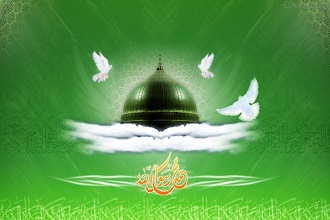
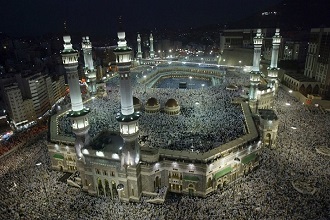
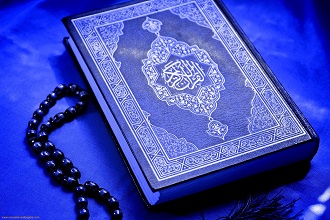

Judaism - one of the world's oldest religions
Judaism encompasses the religion, philosophy, culture and way of life of the Jewish people. Judaism is an ancient monotheistic religion, with the Torah as its foundational text and supplemental oral tradition represented by later texts such as the Midrash and the Talmud. Judaism is considered by Jews to be the expression of the covenantal relationship that God established with the Children of Israel. Judaism claims a historical continuity spanning more than 3000 years.
Judaism’s texts, traditions and values strongly influenced later Abrahamic religions, including Christianity, Islam and the Baha’l Faith. Many aspects of Judaism have also directly or indirectly influenced secular Western ethics and civil law
The most common Jewish funeral and grief traditions:
Jewish mourning rituals both honor the dead and provide a structure for the mourning process. All customs are designed to treat the body with respect; therefore, autopsies and embalming are generally prohibited. Viewing the corpse is also considered disrespectful. The emotional needs of the survivors are very important. There is variance among Reform, Conservative, and Orthodox Jewish practices. No funeral is allowed on Saturday (the Sabbath) or on major religious holidays. Music and flowers are not encouraged. Eulogies are given by rabbis, family and friends. When the deceased person is held in high regard, there are usually several eulogies. Family members and others accompany the casket to the grave and are encouraged to place a shovel of earth on the casket, as a sign of the finality of death. Many mourners may wear a black pin with a torn ribbon, or a torn garment during the funeral and for the next week as a symbol of grief. It is important to remember in the funeral and religious customs of Judaism that one never sends flowers to a Jewish funeral. Newborn babies may be named after the deceased.
Stages of Mourning
Jewish tradition recognizes several stages of mourning, moving from total absorption in grief, to complete re-engagement in everyday life.
1. The time between death and burial (aninut in Hebrew)
2. The seven days following burial (shiva, meaning seven)
3. The first 30 days after burial (shloshim, meaning thirty)
4. The first year
5. Keeping memory alive
Each stage has specific mourning practices. The first anniversary is marked by the unveiling of a tombstone at a special ceremony.
At the end of the first year the mourning period comes to a close. Beyond these initial periods of mourning, there are yearly opportunities built into the calendar for remembering those we lost. Yahrzeit, the anniversary of death and Yizkor (remembrance), a liturgical piece recited on certain holidays, are both opportunities to remember and mourn the loved one.
Main Judaism Holy Places of the World
1. The Western Wall, (known as “wailing Wall”) site of the second Temple in the Jewish Quarter of Old City, Jerusalem, Israel.
2. Rachels Tomb, Bethlehem, Israel.
3. Tomb of King David, Old City, Jerusalem, Israel.
Meet with people who belong to your religion




Hinduism - the world's third largest religion
Hinduism denotes a wide variety of related religious traditions native to South Asia notably in Nepal and India. Its history overlaps or coincides with the development of religion in Indian subcontinent since the Iron Age, with some of its traditions tracing back to prehistoric religions such as those of the Bronze Age Indus Valley Civilization. It has thus been called the “oldest religion” in the world. Scholars regard Hinduism as a synthesis of various Indian cultures and traditions, with diverse roots and no single founder.
The most common Hindu funeral and grief traditions:
Ceremonies help Hindus confront their grief, interact with it, accept it, and go on. Hinduism, like other great religions, has specific rituals for honoring the deceased and addressing a family’s grief. In most cases, the procedures are conducted almost immediately, within a 24-hour period. When a parent has died and the children live far away, other family members hold the body until the children arrive to do the last rites.
According to Hindu tradition and its sacred texts, only a male family member (such as a husband, father or son) can perform the last rites. However, in some cases women have taken on this role, a daughter who could assume the role of a son. In later years, the religious patriarchy interpreted the putrika as the grandson, and reserved the conducting of the last rites for males.
In most Hindu families, the body is bathed immediately after death, sometimes by women in the family. The ritual marks of the community, along with sacred ash, may be applied on the person’s body, under the guidance of the priest who chants holy mantras, which vary in different Hindu communities. Before the body is cremated, the immediate family members put flowers on the body, rice in the mouth (as nourishment for the departed soul), and coins in the hands. The body is placed on a bier and taken to the cremation center. With the exception of the bodies of children and sanyasis, bodies are usually cremated. There are, however, some Hindu communities which practice burial.
The Hindu gods and goddesses can be called on to help. Their goal is to help believers transcend the world as it is ordinarily perceived and realize the divine presence. The many forms of Hindu worship, ritual and meditation are intended to lead the soul toward the direct experience of God or Self. Although the physical body dies, the individual soul has no beginning and no end. It may pass to another reincarnation depending on one’s karma (the consequences of one’s actions over lifetimes). If the soul has realized the true nature of reality, it may become one with the Brahman, the “One.”
When the person dies, the family is in a state of grief. To respect this, no cooking is done in the house until the cremation takes place. “There is a saying that the fire in the house is not lit until the fire in the cremation pyre has gone out,” explains Narayanan. “Friends come in with food. There are very specific dietary injunctions also as to what people can and cannot eat, especially the person who has performed the last rites. The food is vegetarian, without onion and garlic. The foods are considered sattvic (pure) foods.” In the place where the person died, a lamp is lit to light the way for the departed soul and water is kept there for its nourishment. The next day the ashes are collected and immersed in a river–particularly where two rivers meet; in the ocean; or scattered over the earth in India. “This whole time is one of ritual pollution.
There are a certain number of days, depending on the community, after which the family is re-integrated into the society,” says Narayanan. “That can happen after 13 days or 40 days–the specific number of days corresponds with caste and community.” While prayers for the dead are common in all faiths, including Hinduism, the introduction of bhajans (religious hymns) set to music at a gathering of mourners are a later innovation for Hindus in both India and the diaspora. “Frequently both here and in India you have the recitation of the thousand names of Vishnu,” says Narayanan. “This is particularly common for people from South India. These invocations bring the peace that everyone is searching for in the days after death–peace for the mind and the soul.” Belief about death Hindus believe death is part of the continuing cycle of birth, life, death, and rebirth. The soul of the dead transfers to another body after death.
Funeral practices Hindus generally cremate their dead. In preparation for cremation, the body is bathed, laid in a coffin, adorned with sandalwood paste and garlands, and wrapped in white cloth. In the cremation ceremony, the body is carried three times counter clockwise around the pyre, then placed upon it. The chief mourner hits the cremation switch. Mourning rituals The days of mourning are considered a time of ritual impurity. Mourners cover all religious pictures in the house and do not attend festivals or visit swamis or take part in marriage ceremonies. Mourning period length varies, though Hindu scriptures caution against excessive mourning. Ten days later, a ceremony is held at the home of the deceased in order to liberate the soul for its ascent into heaven. Visitors are expected to bring fruit. The mourning period ranges from 10 to 30 days after the death.
Hinduism main holy places.
In India there are thousands of tirthas (places of pilgrimage) visited by millions of people every year. Each is somehow special, often associated with a particular deity or saint, and offering its own particular boon or blessing.
The most famous tirtha is Varanasi, also called Benares or Kashi. It is one of seven ancient holy towns. There are four great dhamas (holy places), which correspond to the four points of the compass and near which the great teacher Shankara established his four main centers.
Another key city is Allahabad, officially known as Prayagraj. It is one of the four main venues for the twelve-year Kumbh Mela.
The others are Haridwar, Ujjain and Nasik.
Meet with people who belong to your religion
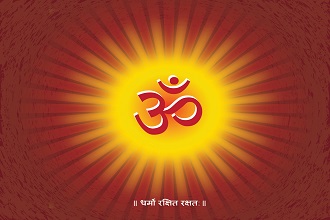
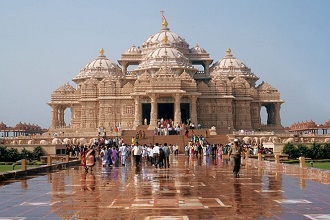
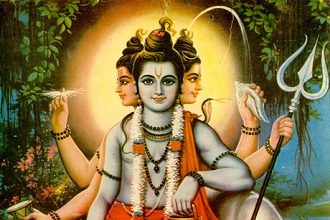

Buddhism - the world's fourth largest religion
Buddhism is a nontheistic religion or philosophy that encompasses a variety of traditions, beliefs and spiritual practices largely based on teachings attributed to Gautama Buddha, commonly known as the Buddha (“the awakened one”). The foundations of Buddhist tradition and practice are the Three Jewels: the Buddha, the Dharma (the teachings), and the Sangha (the community). Main Buddhism concepts include Samsāra and Karma. Samsāra is defined as the continual repetitive cycle of birth and death that arises from ordinary beings’ grasping and fixating on a self and experiences. Karma means action, work or deed; it also refers to the spiritual principle of cause and effect where intent and actions of an individual (cause) influence the future of that individual. Good intent and good deed contribute to good karma and future happiness, while bad intent and bad deed contribute to bad karma and future suffering. Karma is closely associated with the idea of rebirth in some schools of Asian religions. In these schools, karma in the present affects one’s future in the current life, as well as the nature and quality of future lives – or, one’s samsāra.
Grievance, Mourning and Remembrance in Buddhism
According to the Buddhism, individuals pass through a series of reincarnations until they are liberated from worldly illusions and passions. Death is considered as a way to reach the next reincarnation and move closer to nirvana, a state of absolute bliss. Buddhist funerals are often more like celebrations, where followers focus on the soul of the deceased as it makes its ascent from the physical body.
The Buddhist funeral services revolve around the concepts of sharing, good conduct and meditation. The first service is held within two days of a death at the home of the bereaved. A second service is held two to five days following the death, and is conducted by monks at the funeral home. The third and final service is held seven days after the burial or cremation and is meant to create positive energy for the deceased as he transcends to the next stage of reincarnation.
The viewing takes place the evening before the funeral. Guests are expected to view the body and offer a small bow in front of the casket to honor the impermanence of life. Guests should also offer their condolences to the family. The funeral ceremony includes chanting and individual offerings of incense. Guests are not expected to join either part of the ceremony, but should sit quietly and observe the rituals. While the family dresses in white, guests usually wear modest black clothing. Loose clothing is advised for ceremonies at temples where guests must sit on the floor to meditate.
In the Buddhist tradition is that the funeral usually takes place within a week after death. Sending flowers or making a donation to a designated charity in the name of the deceased is appropriate. The casket is open and guests are expected to view it and bow slightly toward it. It is the custom for friends to call at the home of the deceased family after the funeral, but not before After death, while the dead person is being prepared for the funeral fire, the monks continue to chant in order to help the dead one’s good energies to be released from their fading personality. The monks come with the family to the funeral. The family and all their friends give food and candles to the monks. Goodwill is created by these gifts and it is believed that the goodwill helps the lingering spirit of the dead person.
Grieving. It is natural to grieve the loss of family members and others we knew, as we adjust to living without their presence and missing them as part of our lives. The death of a loved one, or even someone we were not close to, is terribly painful event, as time goes on and the people we know pass away along the journey of life, we are reminded of our own inevitable ends in waiting and everything is a blip of transience and impermanent. When a person dies, close relatives usually spend a certain period of time in mourning.
The length of the mourning period depends upon the tie, which existed between the deceased and members of the bereaved family. During this time they dress in a certain way, abstain from most forms of merrymaking and entertainment. Some people wear white, others black and some do not attend weddings or other celebrations for a year. It is a common practice in most Buddhist communities to conduct religious services for the dead during the prescribed periods following the funeral. The Buddhist custom for friends to call at the home of the deceased family after the funeral and sending flowers and making donations to charitable institutions, needy persons, and religious building projects as well as to publish free religious booklets and literature for distribution to the public to perpetuate the memory of the departed ones.
In the Mahayana Buddhism, especially, Vietnamese tradition we pray for the dead for 49 days after passing away, 49 being the estimated time it takes for the spirit to be re-born again into a new life. Some spirits are re-born 3 days, 21 days, 49 days or 100 days after death and in some cases even 7 years.
Tibet. In Tibet the day of death is thought of as highly important. It is believed that as soon as the death of the body has taken place, the personality goes into a state of trance for four days. During this time the person does not know they are dead. This period is called the First Bardo and during it Lamas (monks) saying special verses can reach the dead person. It is believed that towards the end of this time the dead person will see a brilliant light. If the radiance of the Clear Light does not terrify them, and they can welcome it, then the person will not be reborn. But most flee from the Light, which then fades. The person then becomes conscious that death has occurred. At this point the Second Bardo begins. The person sees all that they have ever done or thought passing in front of them. While they watch they feel they have a body but when they realize this is not so, they long to possess one again. Then comes the Third Bardo, which is the state of seeking another birth. All previous thoughts and actions direct the person to choose new parents, who will give them their next.
Buddhism Holy Places in the World.
1. Lumbini: birthplace (in Nepal) Bodh Gaya: the place of his Enlightenment (in the current Mahabodhi Temple).
2. Sarnath: (formally Isipathana) where he delivered his first teaching.
3. Kusinara: (now Kushinagar, Uttar Pradesh, India) where he died.
Meet with people who belong to your religion
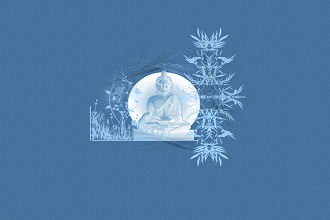

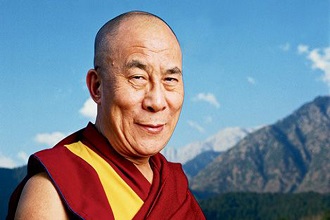
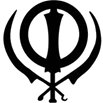
Sikhism - the world's fifth largest religion
Sikhism. The origins of Sikhism lie in the teachings of Guru Nanak and his successors. The essence of Sikh teaching is summed up by Guru Nanak in these words: “Realization of Truth is higher than all else. Higher still is truthful living”. Sikh teaching emphasizes the principle of equality of all humans and rejects discrimination on the basis of caste, creed, and gender. Sikh principles encourage living life as a householder.
The central teaching in Sikhism is the belief in the concept of the oneness of God. Sikhism considers spiritual life and secular life to be intertwined. Sikhs also believe that “all religious traditions are equally valid and capable of enlightening their followers. Sikhism is a Panentheistic or meaning “all-in-God” and a revealed religion.
In Sikhism, the concept of “God” is Vāhigurū—is shapeless, timeless, and sightless. The beginning of the first composition of Sikh scripture is the figure “1”- signifying the universality of “God”. It states that “God” is omnipresent and infinite with power over everything. Sikhs believe that before creation, all that existed was “God” and “God’s” hukam (will or order). When God willed, the entire cosmos was created. From these beginnings, God nurtured “enticement and attachment” to māyā, or the human perception of reality.
Sikhism death and grief rituals:
In Sikhism a funeral ceremony is called “Antam Sanskaar,” or celebration of the completion of life. Rather than lamenting the passing of an individual, Sikhism teaches resignation to the will of the creator, emphasizing that death is a natural process, and an opportunity for reunion of the soul with its maker.
In Sikhism, death is considered a natural process – an event that has absolute certainty and only happens as a direct result of God’s Will or Hukam. To a Sikh, birth and death are closely associated because they are both part of the cycle of human life of “coming and going”. This is seen as transient stage towards liberation, a complete unity with God. Sikhs thus believe in reincarnation.
In Sikhism, after a death occurs, funeral arrangements are made by the family which includes conducting a Sadharan Paath, or a complete reading the Guru Granth Sahib. The Sadharan paath is carried out over a period of ten days following the funeral ceremony after which formal mourning concludes.
The public display of grief at the funeral (Antam Sanskar), such as wailing or crying out loud is discouraged and is kept to a minimum. Cremation is the preferred method of disposal, although if this is not possible any other methods such as burial or submergence at sea are acceptable forms of body disposal.
On the day of the cremation service, the body is taken to the Gurdwara or home where Hymns (Shabads) from the Guru Granth Sahib (the Sikh Scriptures) are recited by the congregation. The goal of hymns is to provide feelings of consolation and courage to the family. Kirtan may also be performed by Ragis while the relatives of the deceased recite “Waheguru” sitting near the coffin. At the conclusion of the service, an Ardas is recited and the coffin proceeds to be taken to the cremation site.
Prior to cremation, a few more Shabads may be sung and final speeches made about the deceased. Then the Kirtan Sohila (night time prayer) is recited and the Ardas (“Antim Ardas” or “Final Prayer”) is offered. Thereafter, the eldest son or a close relative will begin the cremation process by either lighting a fire or pressing a button. The Sikhism funeral service usually lasts between 30 and 60 minutes. After the body is cremated, the ashes are collected and disposed by immersement in the nearest river. In some instances, an optional service may follow the cremation service. This service is held at the Gurdwara, the Sikh place of worship, and is referred to as the Sahaj Paath Bhog Ceremony.
Sikhism holy places in the world.
1. Darbar Sahib (The Royal Court of the Divine) – also known as the Golden Temple,
2. The city of Amritsar in Punjab.
3.The Five Holy Takhts – These Five Gurdwar as known as the Five Takhts (Thrones) have a very special significance for the Sikh community. They are considered the seats of Sikh religious authority. Many important decisions concerning the religious and social life of the Sikh community were made here.
Meet with people who belong to your religion
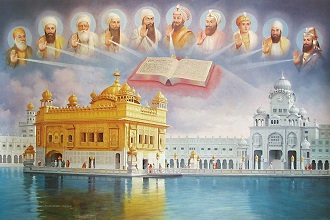
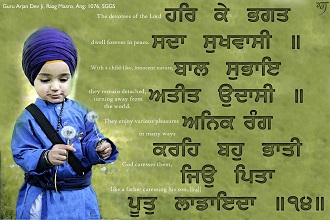
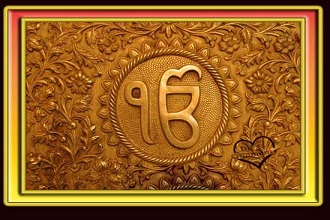
All religions are branches of one big tree
World's six major religions communities and organizations global directory
- European Network of the communities
- USA churches directory by state
- United Christian association
- Christian Communities UK
- Christian Ministers association
- Christian community New Zealand
- Christian community churches in Australia
- The Christian Community in the UK and Ireland
- Movement for religious renewal North America
- Movement for religious renewal Australia and New Zealand
